
vlmrun-hub
A hub for various industry-specific schemas to be used with VLMs.
Stars: 495
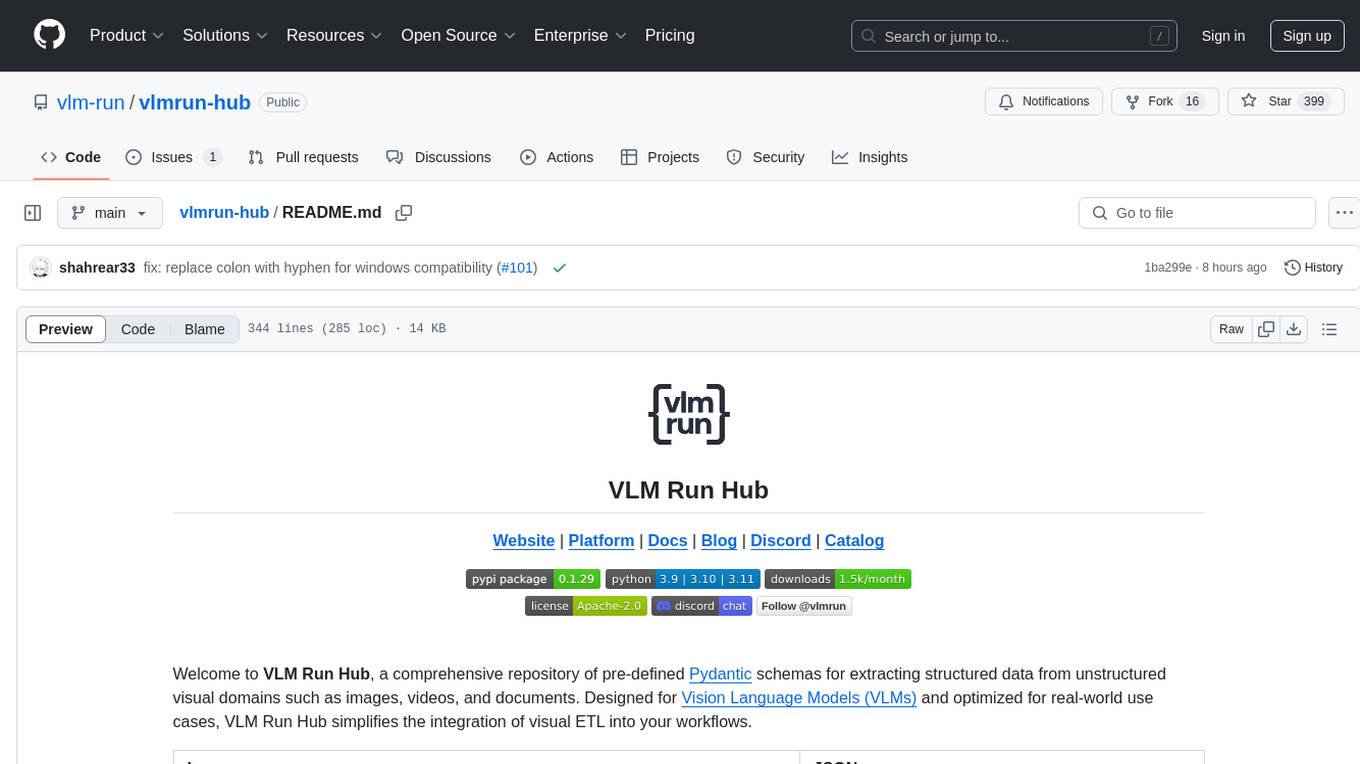
VLMRun Hub is a versatile tool for managing and running virtual machines in a centralized manner. It provides a user-friendly interface to easily create, start, stop, and monitor virtual machines across multiple hosts. With VLMRun Hub, users can efficiently manage their virtualized environments and streamline their workflow. The tool offers flexibility and scalability, making it suitable for both small-scale personal projects and large-scale enterprise deployments.
README:
Welcome to VLM Run Hub, a comprehensive repository of pre-defined Pydantic schemas for extracting structured data from unstructured visual domains such as images, videos, and documents. Designed for Vision Language Models (VLMs) and optimized for real-world use cases, VLM Run Hub simplifies the integration of visual ETL into your workflows.
While vision models like OpenAI’s GPT-4o and Anthropic’s Claude Vision excel in exploratory tasks like "chat with images," they often lack practicality for automation and integration, where strongly-typed, validated outputs are crucial.
The Structured Outputs API (popularized by GPT-4o, Gemini) addresses this by constraining LLMs to return data in precise, strongly-typed formats such as Pydantic models. This eliminates complex parsing and validation, ensuring outputs conform to expected types and structures. These schemas can be nested and include complex types like lists and dictionaries, enabling seamless integration with existing systems while leveraging the full capabilities of the model.
- 📚 Easy to use: Pydantic is a well-understood and battle-tested data model for structured data.
- 🔋 Batteries included: Each schema in this repo has been validated across real-world industry use cases—from healthcare to finance to media—saving you weeks of development effort.
- 🔍 Automatic Data-validation: Built-in Pydantic validation ensures your extracted data is clean, accurate, and reliable, reducing errors and simplifying downstream workflows.
- 🔌 Type-safety: With Pydantic’s type-safety and compatibility with tools like
mypyandpyright, you can build composable, modular systems that are robust and maintainable. - 🧰 Model-agnostic: Use the same schema with multiple VLM providers, no need to rewrite prompts for different VLMs.
- 🚀 Optimized for Visual ETL: Purpose-built for extracting structured data from images, videos, and documents, this repo bridges the gap between unstructured data and actionable insights.
The VLM Run Hub maintains a comprehensive catalog of all available schemas in the vlmrun/hub/catalog.yaml file. The catalog is automatically validated to ensure consistency and completeness of schema documentation. We refer the developer to the catalog-spec.yaml for the full YAML specification.
If you have a new schema you want to add to the catalog, please refer to the SCHEMA-GUIDELINES.md for the full guidelines.
Let's say we want to extract invoice metadata from an invoice image. You can readily use our Invoice schema we have defined under vlmrun.hub.schemas.document.invoice and use it with any VLM of your choosing.
For a comprehensive walkthrough of available schemas and their usage, check out our Schema Showcase Notebook.
pip install vlmrun-hubWith Instructor / OpenAI
import instructor
from openai import OpenAI
from vlmrun.hub.schemas.document.invoice import Invoice
IMAGE_URL = "https://storage.googleapis.com/vlm-data-public-prod/hub/examples/document.invoice/invoice_1.jpg"
client = instructor.from_openai(
OpenAI(), mode=instructor.Mode.MD_JSON
)
response = client.chat.completions.create(
model="gpt-4o-mini",
messages=[
{ "role": "user", "content": [
{"type": "text", "text": "Extract the invoice in JSON."},
{"type": "image_url", "image_url": {"url": IMAGE_URL}, "detail": "auto"}
]}
],
response_model=Invoice,
temperature=0,
)JSON Response:
| Image | JSON Output 🔐 |
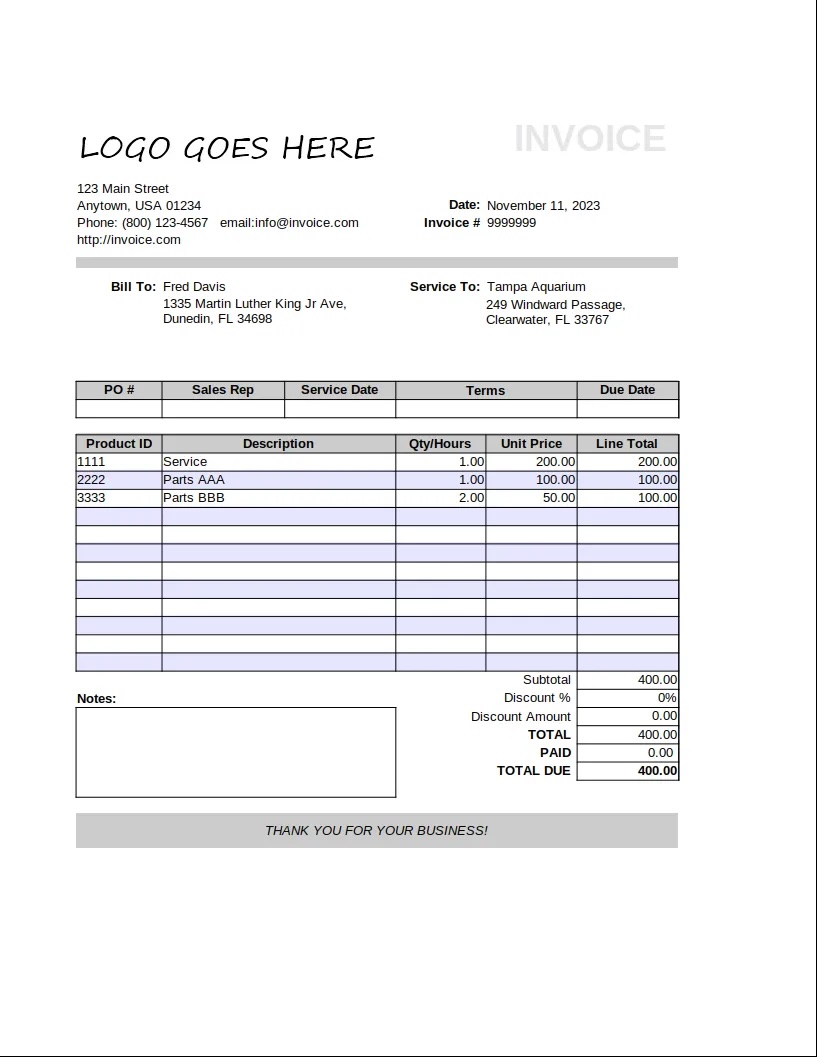
|
{
"invoice_id": "9999999",
"period_start": null,
"period_end": null,
"invoice_issue_date": "2023-11-11",
"invoice_due_date": null,
"order_id": null,
"customer_id": null,
"issuer": "Anytown, USA",
"issuer_address": {
"street": "123 Main Street",
"city": "Anytown",
"state": "USA",
"postal_code": "01234",
"country": null
},
"customer": "Fred Davis",
"customer_email": "[email protected]",
"customer_phone": "(800) 123-4567",
"customer_billing_address": {
"street": "1335 Martin Luther King Jr Ave",
"city": "Dunedin",
"state": "FL",
"postal_code": "34698",
"country": null
},
"customer_shipping_address": {
"street": "249 Windward Passage",
"city": "Clearwater",
"state": "FL",
"postal_code": "33767",
"country": null
},
"items": [
{
"description": "Service",
"quantity": 1,
"currency": null,
"unit_price": 200.0,
"total_price": 200.0
},
{
"description": "Parts AAA",
"quantity": 1,
"currency": null,
"unit_price": 100.0,
"total_price": 100.0
},
{
"description": "Parts BBB",
"quantity": 2,
"currency": null,
"unit_price": 50.0,
"total_price": 100.0
}
],
"subtotal": 400.0,
"tax": null,
"total": 400.0,
"currency": null,
"notes": "",
"others": null
} |
With VLM Run
import requests
from vlmrun.hub.schemas.document.invoice import Invoice
IMAGE_URL = "https://storage.googleapis.com/vlm-data-public-prod/hub/examples/document.invoice/invoice_1.jpg"
json_data = {
"image": IMAGE_URL,
"model": "vlm-1",
"domain": "document.invoice",
"json_schema": Invoice.model_json_schema(),
}
response = requests.post(
f"https://api.vlm.run/v1/image/generate",
headers={"Authorization": f"Bearer <your-api-key>"},
json=json_data,
)import instructor
from openai import OpenAI
from vlmrun.hub.schemas.document.invoice import Invoice
IMAGE_URL = "https://storage.googleapis.com/vlm-data-public-prod/hub/examples/document.invoice/invoice_1.jpg"
client = OpenAI()
completion = client.beta.chat.completions.parse(
model="gpt-4o-mini",
messages=[
{"role": "user", "content": [
{"type": "text", "text": "Extract the invoice in JSON."},
{"type": "image_url", "image_url": {"url": IMAGE_URL}, "detail": "auto"}
]},
],
response_format=Invoice,
temperature=0,
)When working with the OpenAI Structured Outputs API, you need to ensure that the
response_formatis a valid Pydantic model with the supported types.
Locally with Ollama
Note: For certain vlmrun.common utilities, you will need to install our main Python SDK
via pip install vlmrun.
from ollama import chat
from vlmrun.common.image import encode_image
from vlmrun.common.utils import remote_image
from vlmrun.hub.schemas.document.invoice import Invoice
IMAGE_URL = "https://storage.googleapis.com/vlm-data-public-prod/hub/examples/document.invoice/invoice_1.jpg"
img = remote_image(IMAGE_URL)
chat_response = chat(
model="llama3.2-vision:11b",
format=Invoice.model_json_schema(),
messages=[
{
"role": "user",
"content": "Extract the invoice in JSON.",
"images": [encode_image(img, format="JPEG").split(",")[1]],
},
],
options={
"temperature": 0
},
)
response = Invoice.model_validate_json(
chat_response.message.content
)We periodically run popular VLMs on each of the examples & schemas in the catalog.yaml file and publish the results in the benchmarks directory.
| Provider | Model | Date | Results |
|---|---|---|---|
| OpenAI | gpt-4o-2024-11-20 | 2025-01-09 | link |
| OpenAI | gpt-4o-mini-2024-07-18 | 2025-01-09 | link |
| Gemini | gemini-2.0-flash-exp | 2025-01-10 | link |
| Ollama | llama3.2-vision:11b | 2025-01-10 | link |
| Ollama | Qwen2.5-VL-7B-Instruct:Q4_K_M_benxh | 2025-02-20 | link |
| Ollama + Instructor | Qwen2.5-VL-7B-Instruct:Q4_K_M_benxh | 2025-02-20 | link |
| Microsoft | phi-4 | 2025-01-10 | link |
Schemas are organized by industry for easy navigation:
vlmrun
└── hub
├── schemas
| ├── <industry>
| | ├── <use-case-1>.py
| | ├── <use-case-2>.py
| | └── ...
│ ├── aerospace
│ │ └── remote_sensing.py
│ ├── document # all document schemas are here
| | ├── invoice.py
| | ├── us_drivers_license.py
| | └── ...
│ ├── healthcare
│ │ └── medical_insurance_card.py
│ └── retail
│ │ └── ecommerce_product_caption.py
│ └── contrib # all contributions are welcome here!
│ └── <schema-name>.py
└── version.py
We're building this hub for the community, and contributions are always welcome! Follow the CONTRIBUTING and SCHEMA-GUIDELINES.md to get started.
- 💬 Send us an email at [email protected] or join our Discord for help.
- 📣 Follow us on Twitter, and LinkedIn to keep up-to-date on our products.
For Tasks:
Click tags to check more tools for each tasksFor Jobs:
Alternative AI tools for vlmrun-hub
Similar Open Source Tools

vlmrun-hub
VLMRun Hub is a versatile tool for managing and running virtual machines in a centralized manner. It provides a user-friendly interface to easily create, start, stop, and monitor virtual machines across multiple hosts. With VLMRun Hub, users can efficiently manage their virtualized environments and streamline their workflow. The tool offers flexibility and scalability, making it suitable for both small-scale personal projects and large-scale enterprise deployments.
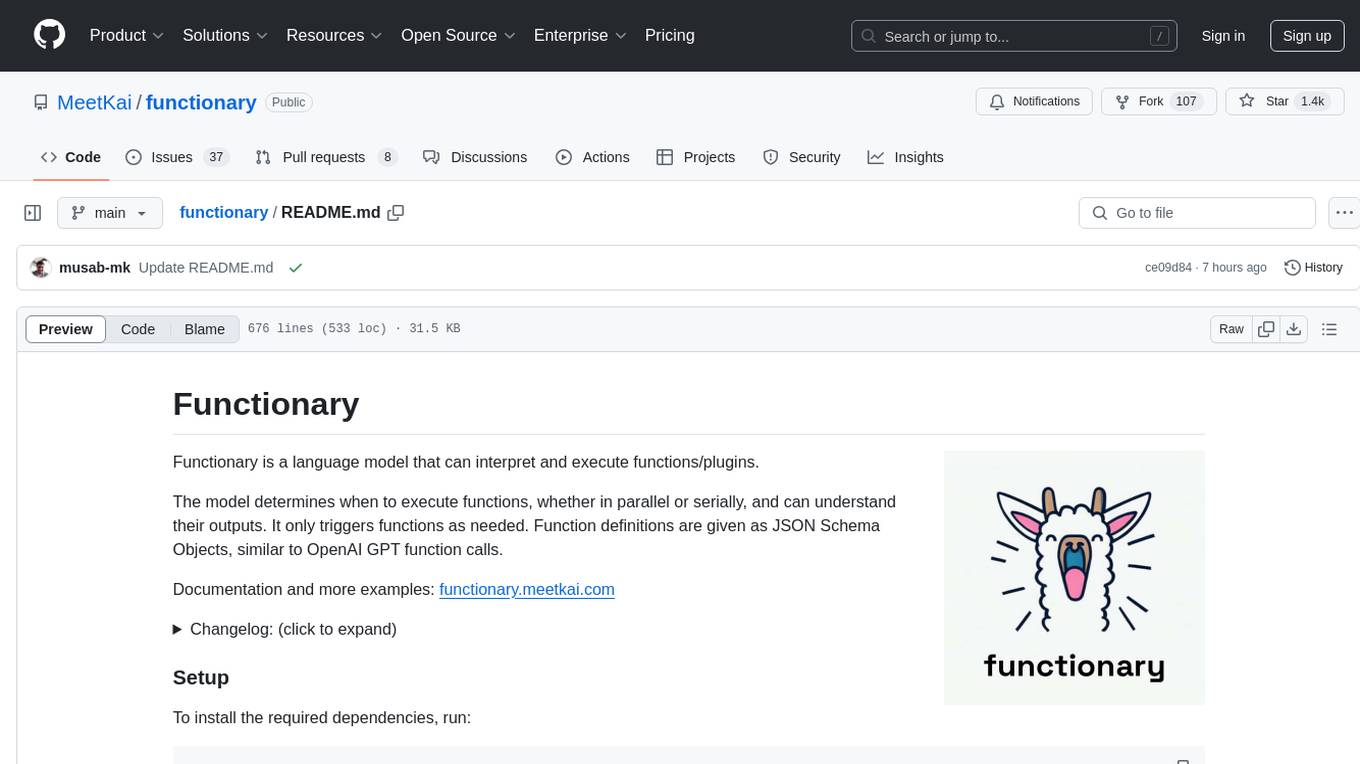
functionary
Functionary is a language model that interprets and executes functions/plugins. It determines when to execute functions, whether in parallel or serially, and understands their outputs. Function definitions are given as JSON Schema Objects, similar to OpenAI GPT function calls. It offers documentation and examples on functionary.meetkai.com. The newest model, meetkai/functionary-medium-v3.1, is ranked 2nd in the Berkeley Function-Calling Leaderboard. Functionary supports models with different context lengths and capabilities for function calling and code interpretation. It also provides grammar sampling for accurate function and parameter names. Users can deploy Functionary models serverlessly using Modal.com.
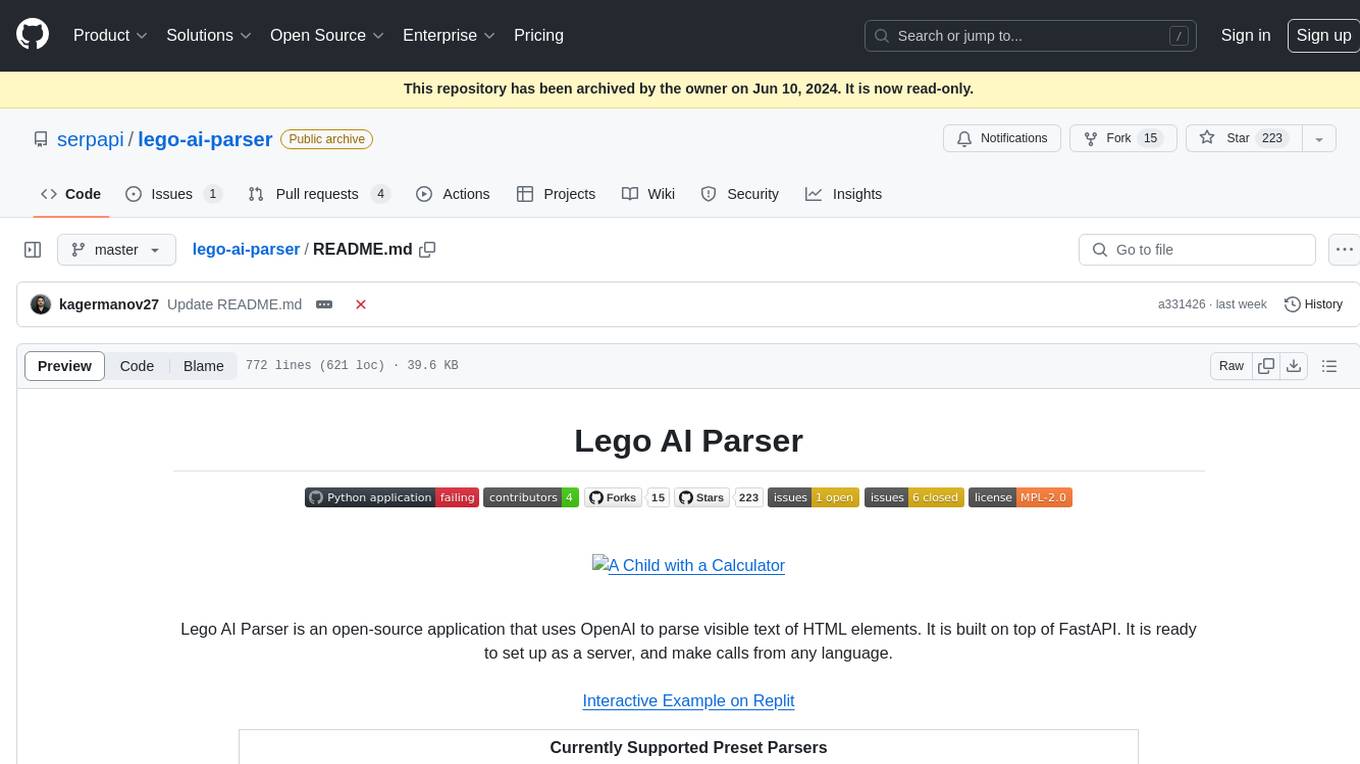
lego-ai-parser
Lego AI Parser is an open-source application that uses OpenAI to parse visible text of HTML elements. It is built on top of FastAPI, ready to set up as a server, and make calls from any language. It supports preset parsers for Google Local Results, Amazon Listings, Etsy Listings, Wayfair Listings, BestBuy Listings, Costco Listings, Macy's Listings, and Nordstrom Listings. Users can also design custom parsers by providing prompts, examples, and details about the OpenAI model under the classifier key.
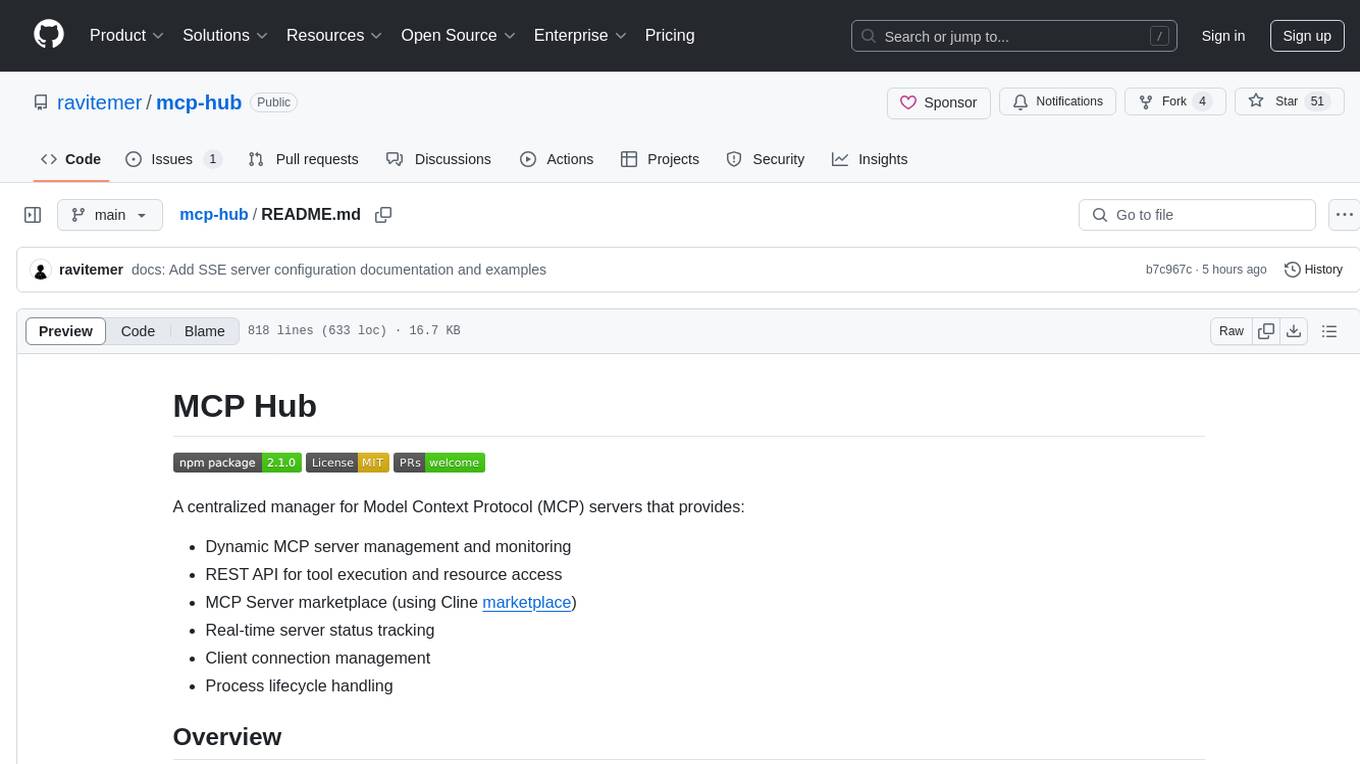
mcp-hub
MCP Hub is a centralized manager for Model Context Protocol (MCP) servers, offering dynamic server management and monitoring, REST API for tool execution and resource access, MCP Server marketplace integration, real-time server status tracking, client connection management, and process lifecycle handling. It acts as a central management server connecting to and managing multiple MCP servers, providing unified API endpoints for client access, handling server lifecycle and health monitoring, and routing requests between clients and MCP servers.
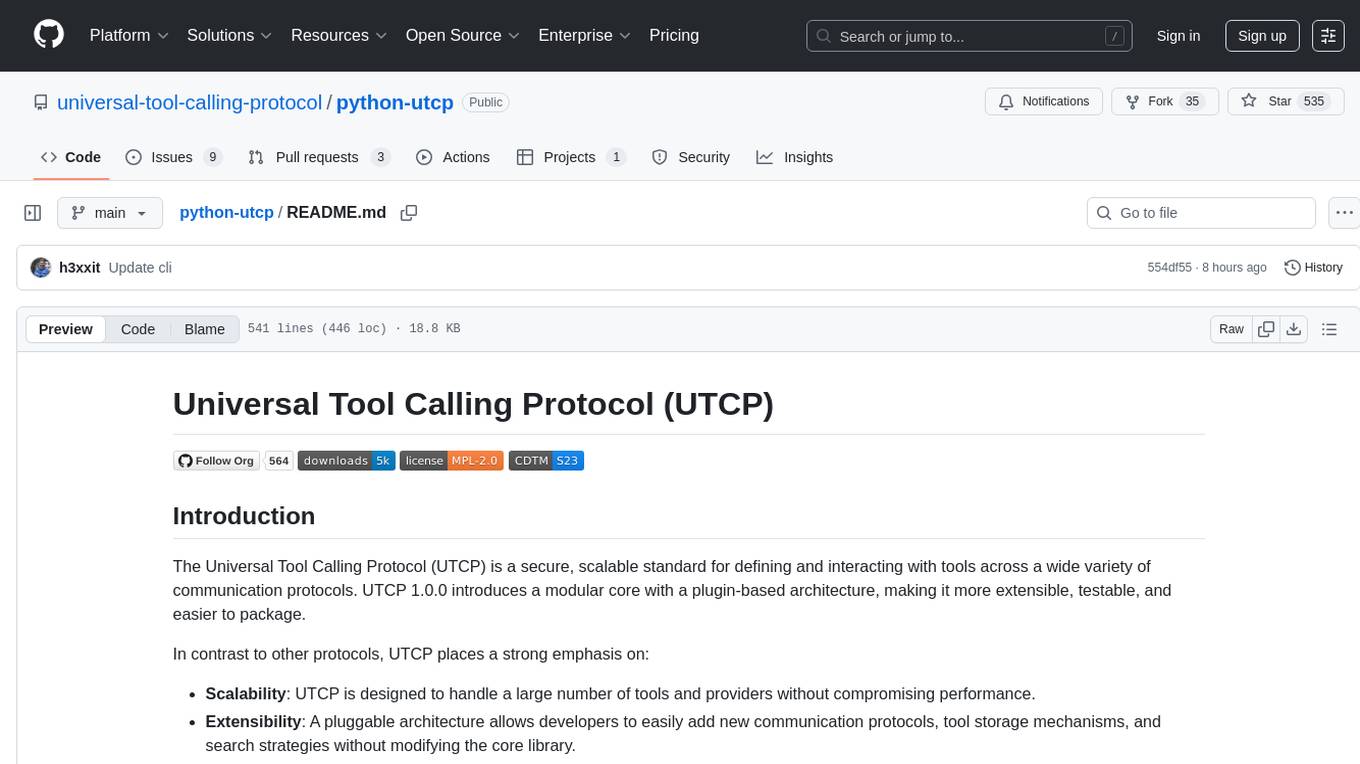
python-utcp
The Universal Tool Calling Protocol (UTCP) is a secure and scalable standard for defining and interacting with tools across various communication protocols. UTCP emphasizes scalability, extensibility, interoperability, and ease of use. It offers a modular core with a plugin-based architecture, making it extensible, testable, and easy to package. The repository contains the complete UTCP Python implementation with core components and protocol-specific plugins for HTTP, CLI, Model Context Protocol, file-based tools, and more.
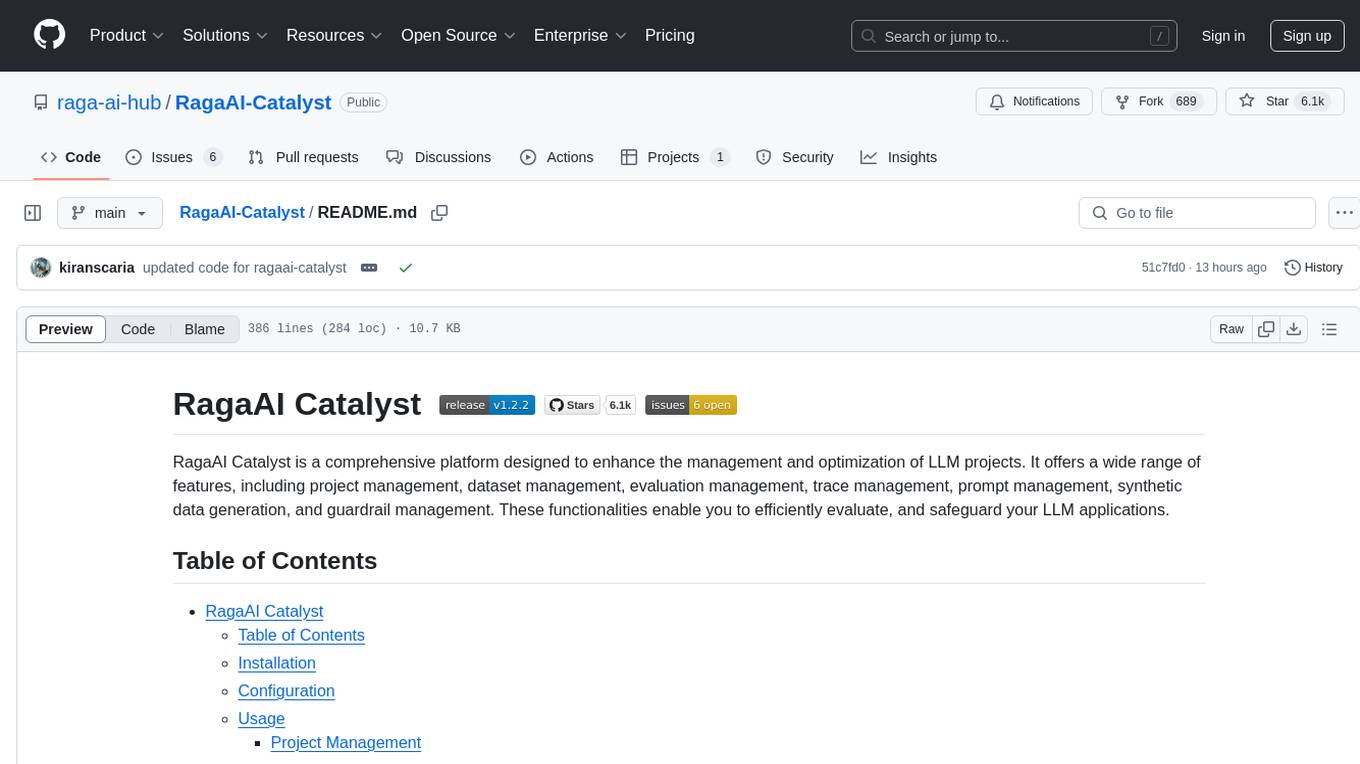
RagaAI-Catalyst
RagaAI Catalyst is a comprehensive platform designed to enhance the management and optimization of LLM projects. It offers features such as project management, dataset management, evaluation management, trace management, prompt management, synthetic data generation, and guardrail management. These functionalities enable efficient evaluation and safeguarding of LLM applications.
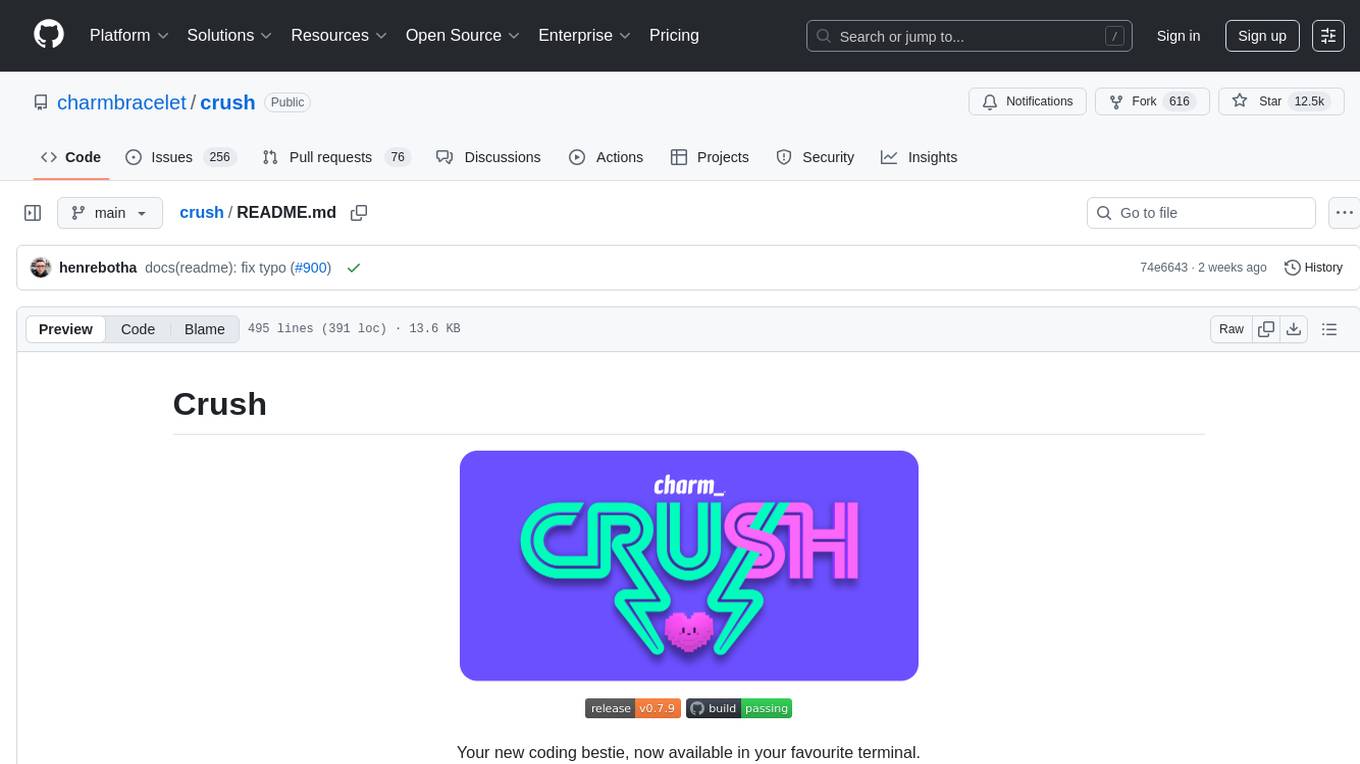
crush
Crush is a versatile tool designed to enhance coding workflows in your terminal. It offers support for multiple LLMs, allows for flexible switching between models, and enables session-based work management. Crush is extensible through MCPs and works across various operating systems. It can be installed using package managers like Homebrew and NPM, or downloaded directly. Crush supports various APIs like Anthropic, OpenAI, Groq, and Google Gemini, and allows for customization through environment variables. The tool can be configured locally or globally, and supports LSPs for additional context. Crush also provides options for ignoring files, allowing tools, and configuring local models. It respects `.gitignore` files and offers logging capabilities for troubleshooting and debugging.
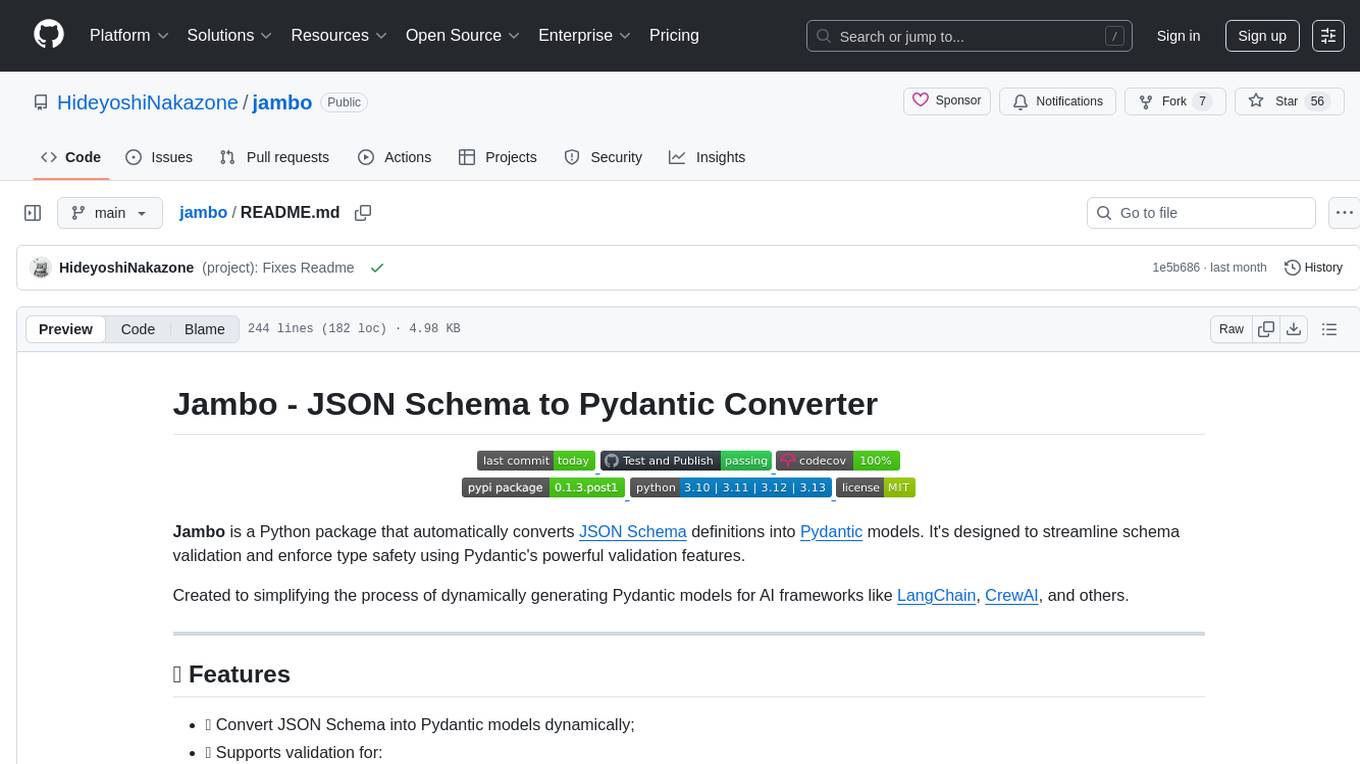
jambo
Jambo is a Python package that automatically converts JSON Schema definitions into Pydantic models. It streamlines schema validation and enforces type safety using Pydantic's validation features. The tool supports various JSON Schema features like strings, integers, floats, booleans, arrays, nested objects, and more. It enforces constraints such as minLength, maxLength, pattern, minimum, maximum, uniqueItems, and provides a zero-config approach for generating models. Jambo is designed to simplify the process of dynamically generating Pydantic models for AI frameworks.
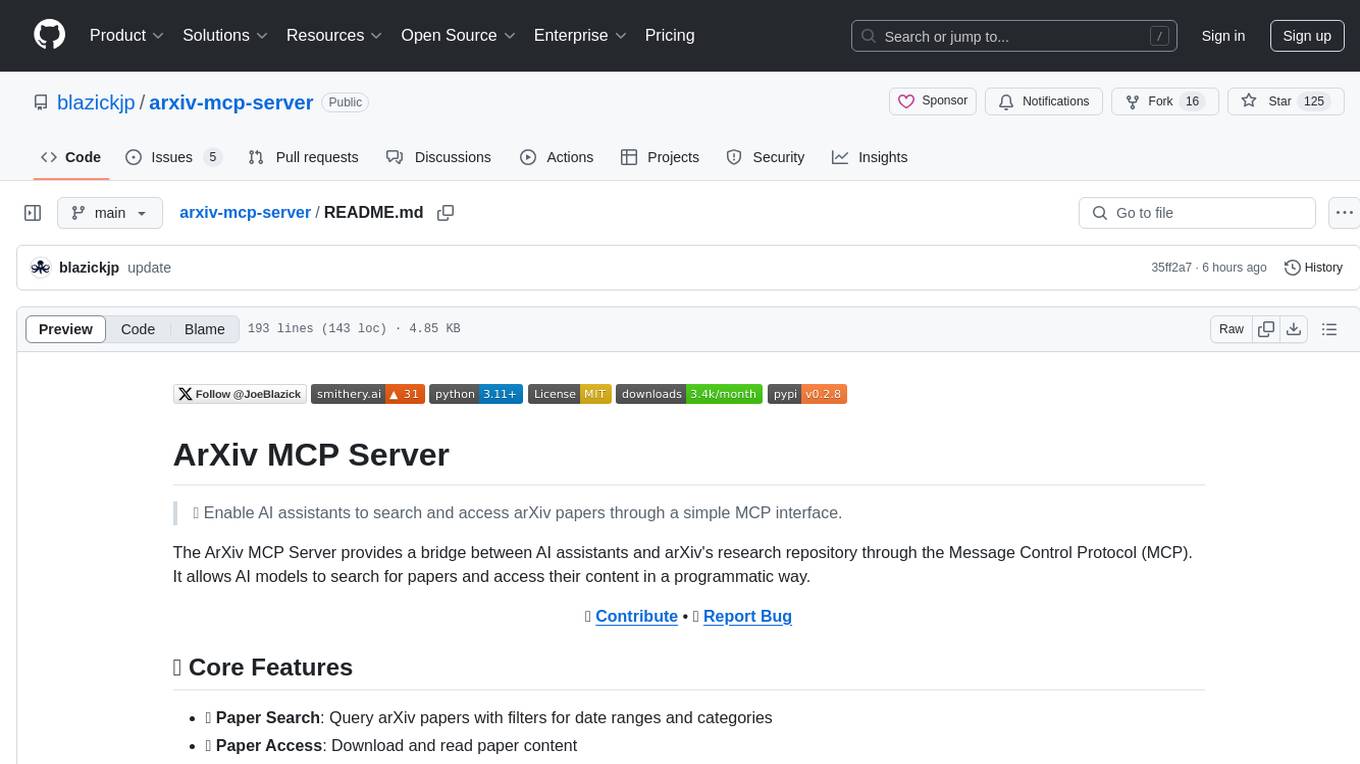
arxiv-mcp-server
The ArXiv MCP Server acts as a bridge between AI assistants and arXiv's research repository, enabling AI models to search for and access papers programmatically through the Message Control Protocol (MCP). It offers features like paper search, access, listing, local storage, and research prompts. Users can install it via Smithery or manually for Claude Desktop. The server provides tools for paper search, download, listing, and reading, along with specialized prompts for paper analysis. Configuration can be done through environment variables, and testing is supported with a test suite. The tool is released under the MIT License and is developed by the Pearl Labs Team.
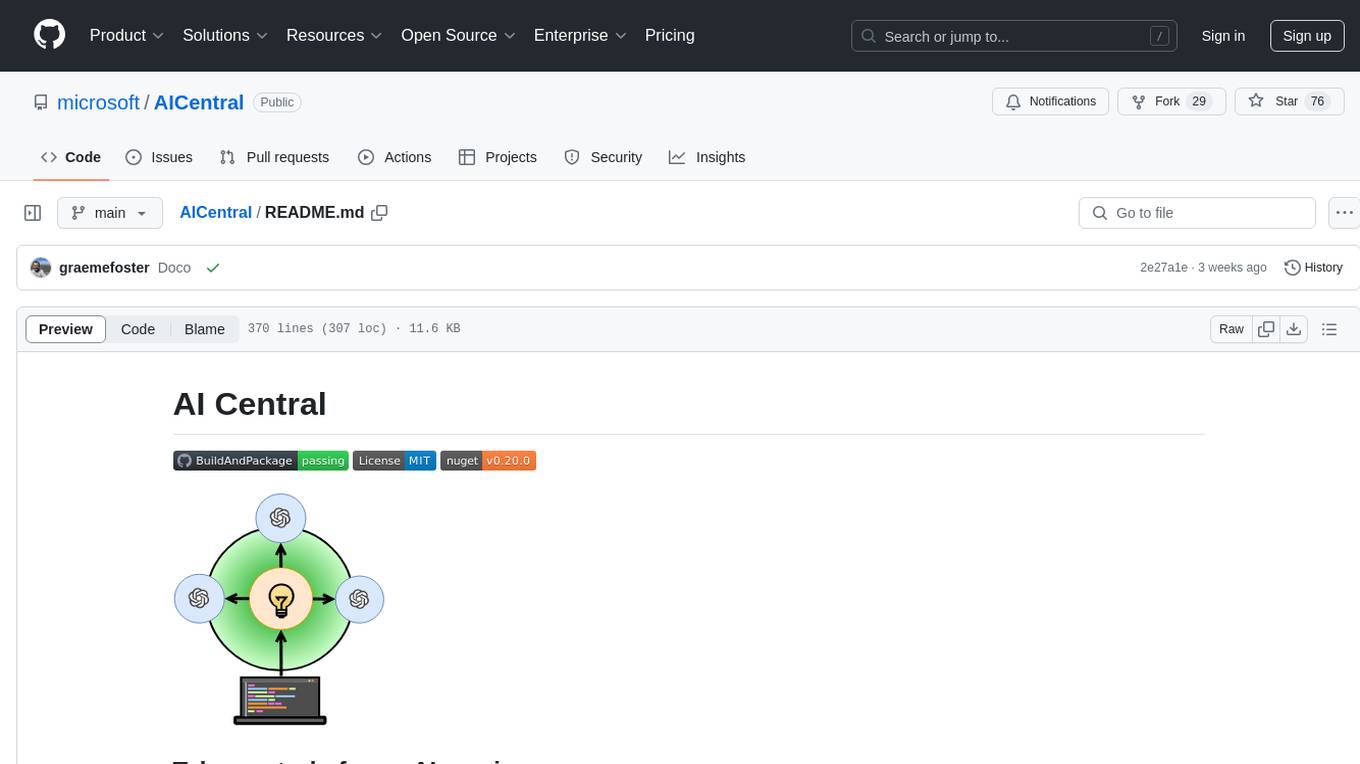
AICentral
AI Central is a powerful tool designed to take control of your AI services with minimal overhead. It is built on Asp.Net Core and dotnet 8, offering fast web-server performance. The tool enables advanced Azure APIm scenarios, PII stripping logging to Cosmos DB, token metrics through Open Telemetry, and intelligent routing features. AI Central supports various endpoint selection strategies, proxying asynchronous requests, custom OAuth2 authorization, circuit breakers, rate limiting, and extensibility through plugins. It provides an extensibility model for easy plugin development and offers enriched telemetry and logging capabilities for monitoring and insights.
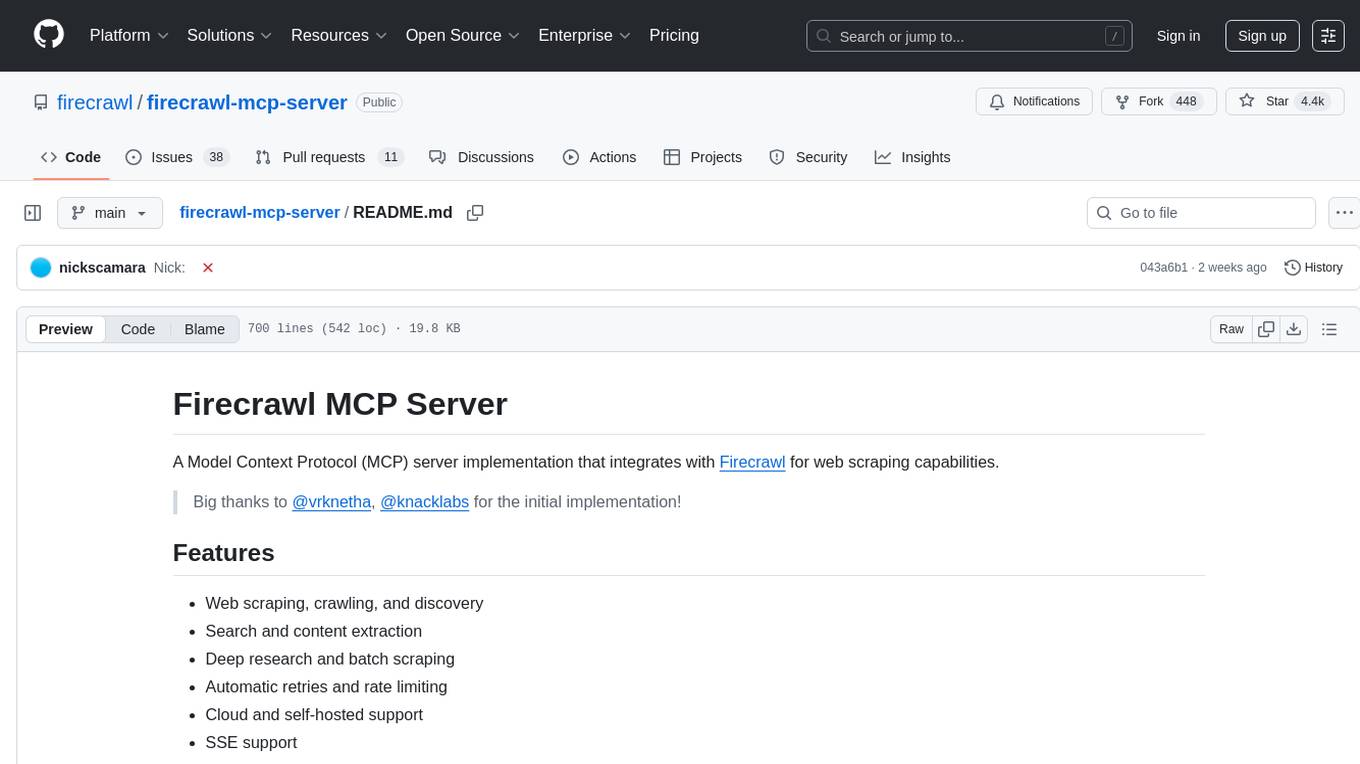
firecrawl-mcp-server
Firecrawl MCP Server is a Model Context Protocol (MCP) server implementation that integrates with Firecrawl for web scraping capabilities. It offers features such as web scraping, crawling, and discovery, search and content extraction, deep research and batch scraping, automatic retries and rate limiting, cloud and self-hosted support, and SSE support. The server can be configured to run with various tools like Cursor, Windsurf, SSE Local Mode, Smithery, and VS Code. It supports environment variables for cloud API and optional configurations for retry settings and credit usage monitoring. The server includes tools for scraping, batch scraping, mapping, searching, crawling, and extracting structured data from web pages. It provides detailed logging and error handling functionalities for robust performance.
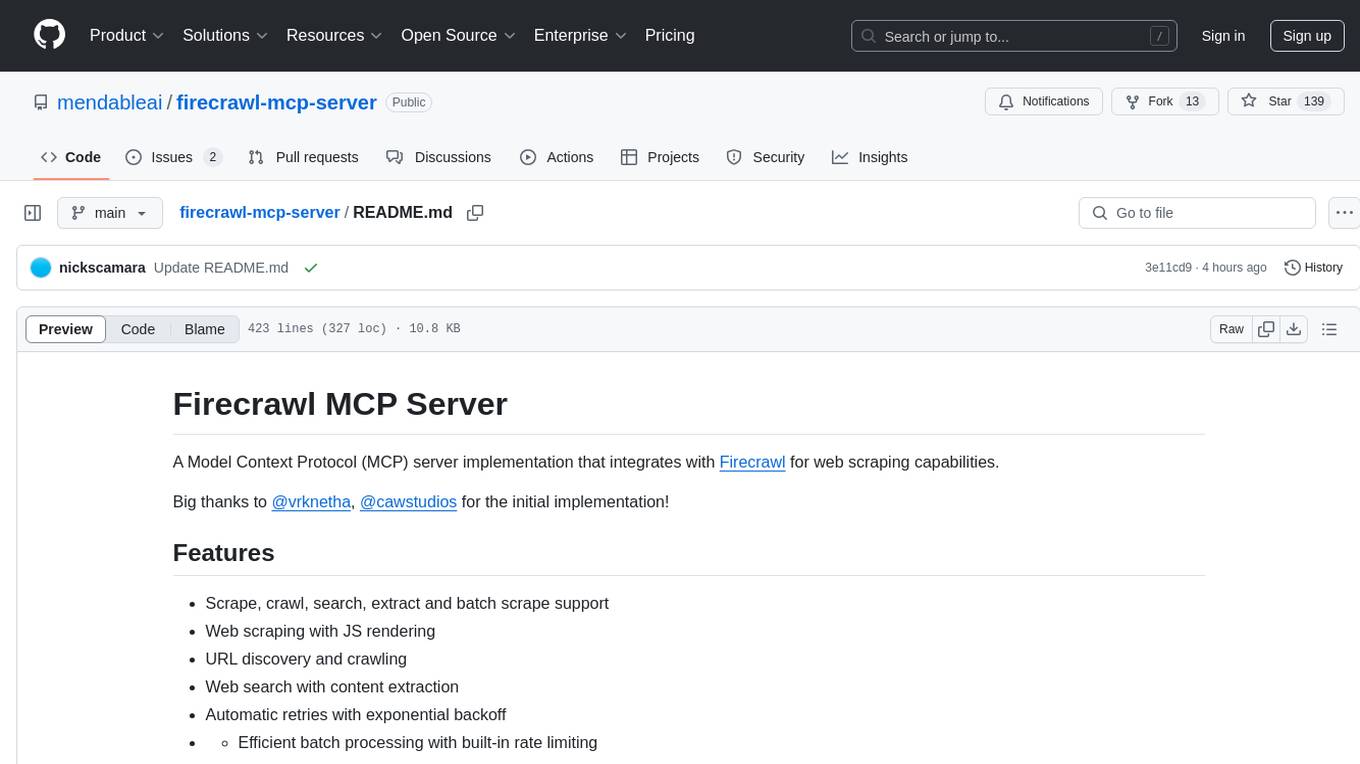
firecrawl-mcp-server
Firecrawl MCP Server is a Model Context Protocol (MCP) server implementation that integrates with Firecrawl for web scraping capabilities. It supports features like scrape, crawl, search, extract, and batch scrape. It provides web scraping with JS rendering, URL discovery, web search with content extraction, automatic retries with exponential backoff, credit usage monitoring, comprehensive logging system, support for cloud and self-hosted FireCrawl instances, mobile/desktop viewport support, and smart content filtering with tag inclusion/exclusion. The server includes configurable parameters for retry behavior and credit usage monitoring, rate limiting and batch processing capabilities, and tools for scraping, batch scraping, checking batch status, searching, crawling, and extracting structured information from web pages.
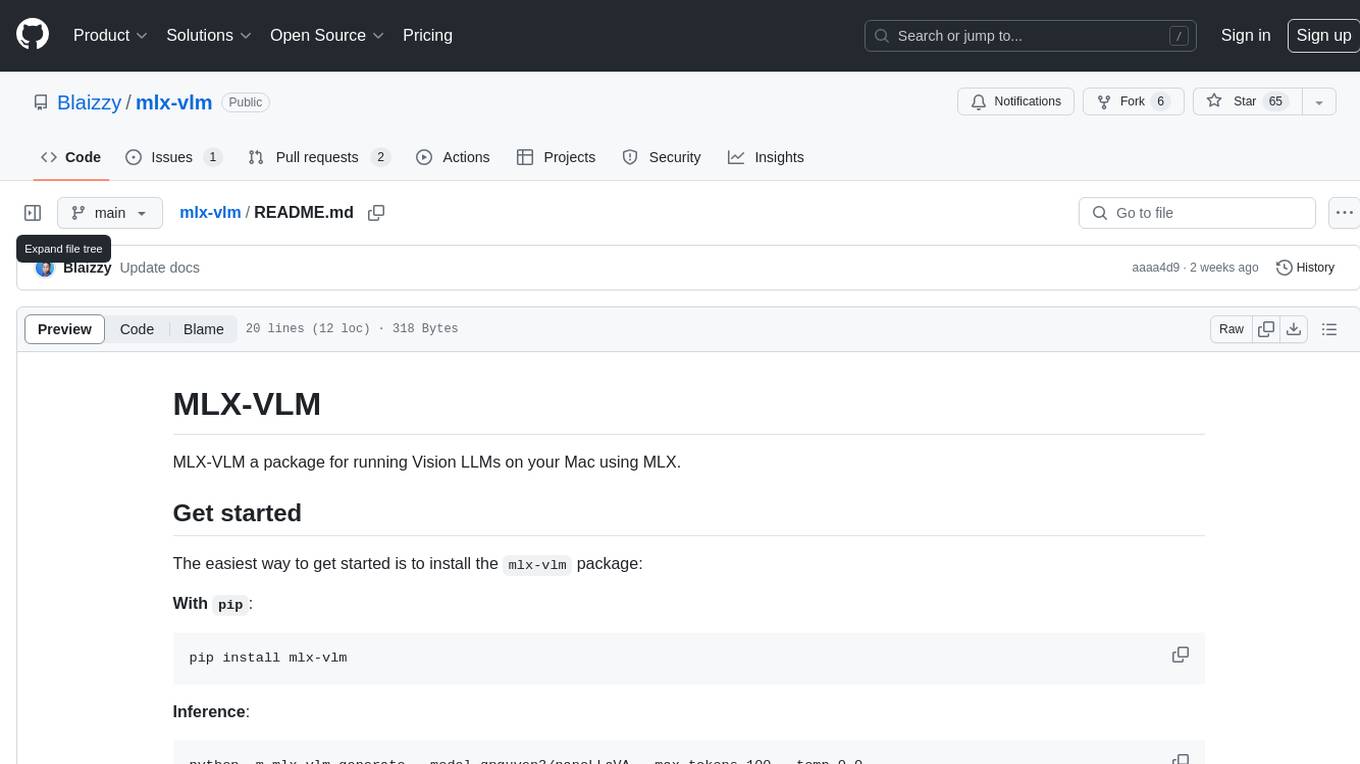
mlx-vlm
MLX-VLM is a package designed for running Vision LLMs on Mac systems using MLX. It provides a convenient way to install and utilize the package for processing large language models related to vision tasks. The tool simplifies the process of running LLMs on Mac computers, offering a seamless experience for users interested in leveraging MLX for vision-related projects.
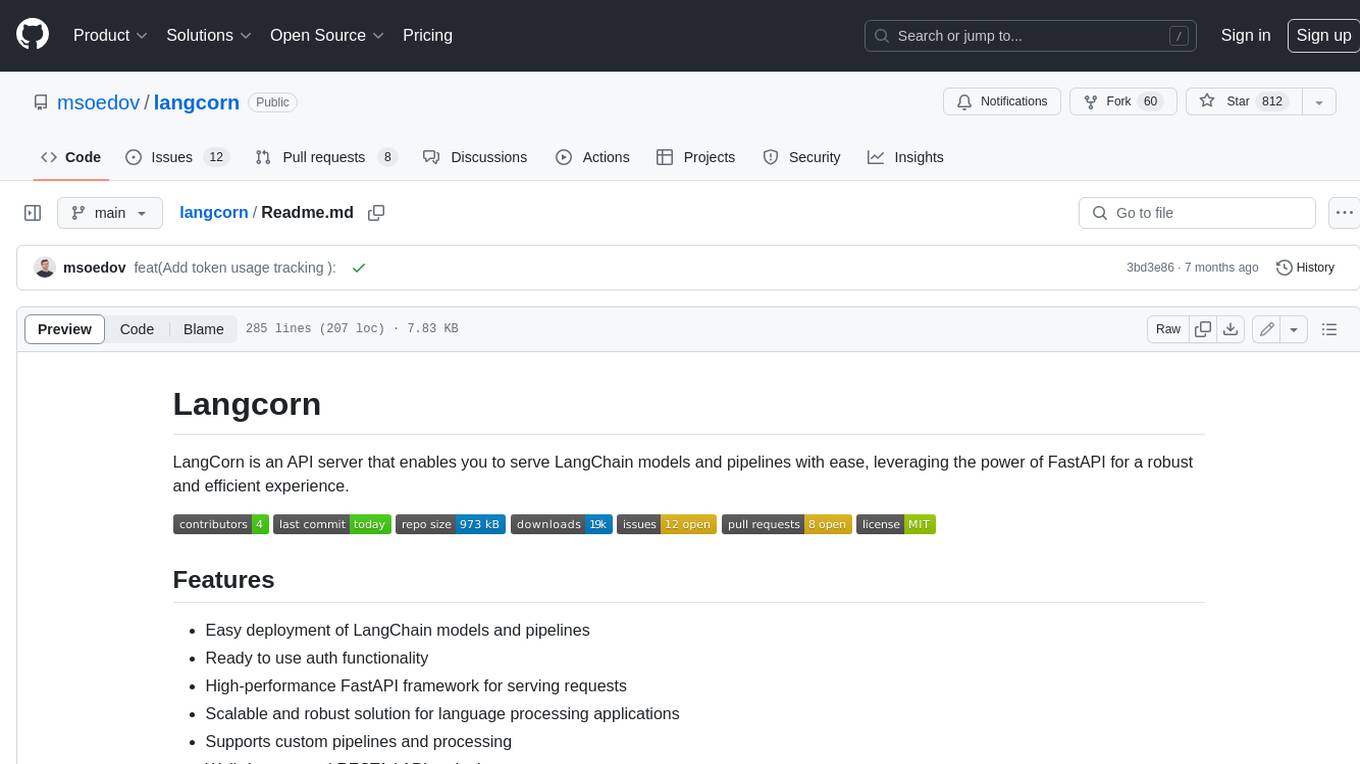
langcorn
LangCorn is an API server that enables you to serve LangChain models and pipelines with ease, leveraging the power of FastAPI for a robust and efficient experience. It offers features such as easy deployment of LangChain models and pipelines, ready-to-use authentication functionality, high-performance FastAPI framework for serving requests, scalability and robustness for language processing applications, support for custom pipelines and processing, well-documented RESTful API endpoints, and asynchronous processing for faster response times.
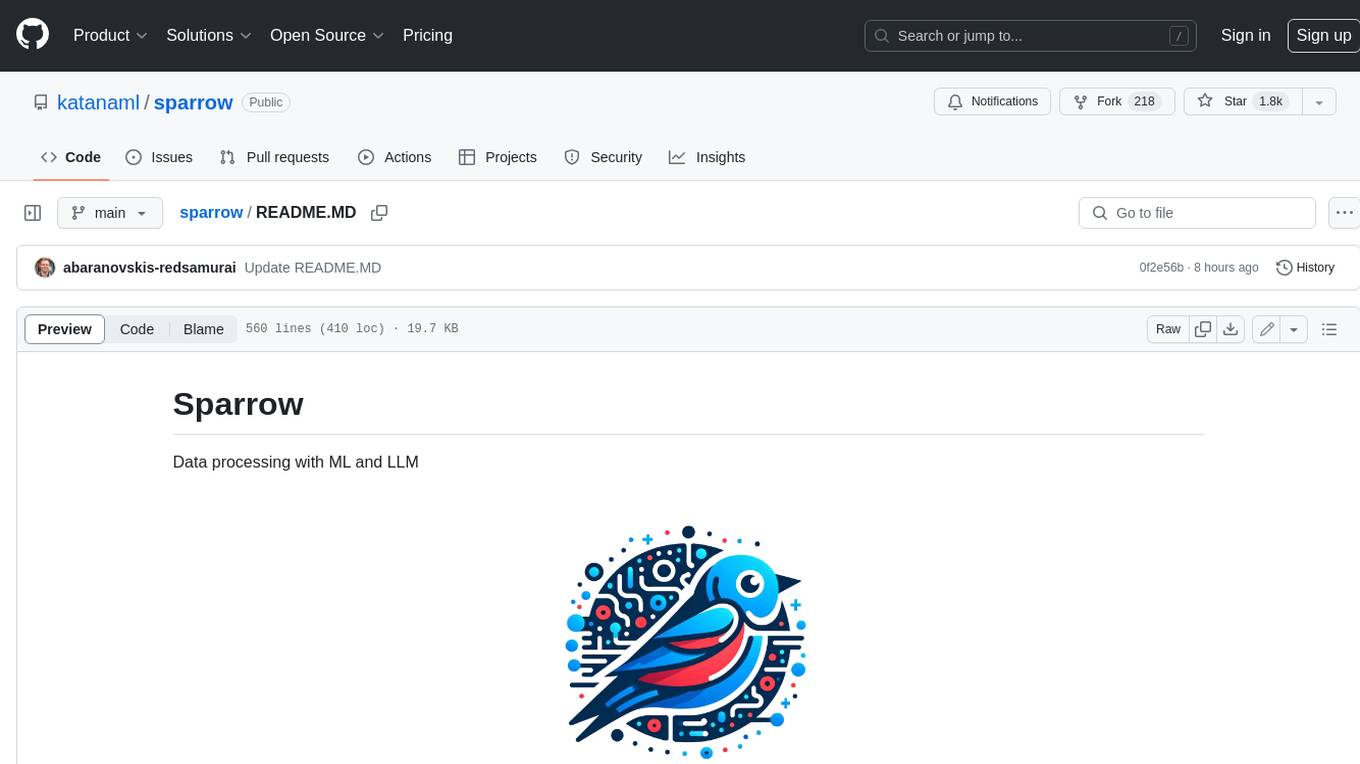
sparrow
Sparrow is an innovative open-source solution for efficient data extraction and processing from various documents and images. It seamlessly handles forms, invoices, receipts, and other unstructured data sources. Sparrow stands out with its modular architecture, offering independent services and pipelines all optimized for robust performance. One of the critical functionalities of Sparrow - pluggable architecture. You can easily integrate and run data extraction pipelines using tools and frameworks like LlamaIndex, Haystack, or Unstructured. Sparrow enables local LLM data extraction pipelines through Ollama or Apple MLX. With Sparrow solution you get API, which helps to process and transform your data into structured output, ready to be integrated with custom workflows. Sparrow Agents - with Sparrow you can build independent LLM agents, and use API to invoke them from your system. **List of available agents:** * **llamaindex** - RAG pipeline with LlamaIndex for PDF processing * **vllamaindex** - RAG pipeline with LLamaIndex multimodal for image processing * **vprocessor** - RAG pipeline with OCR and LlamaIndex for image processing * **haystack** - RAG pipeline with Haystack for PDF processing * **fcall** - Function call pipeline * **unstructured-light** - RAG pipeline with Unstructured and LangChain, supports PDF and image processing * **unstructured** - RAG pipeline with Weaviate vector DB query, Unstructured and LangChain, supports PDF and image processing * **instructor** - RAG pipeline with Unstructured and Instructor libraries, supports PDF and image processing. Works great for JSON response generation
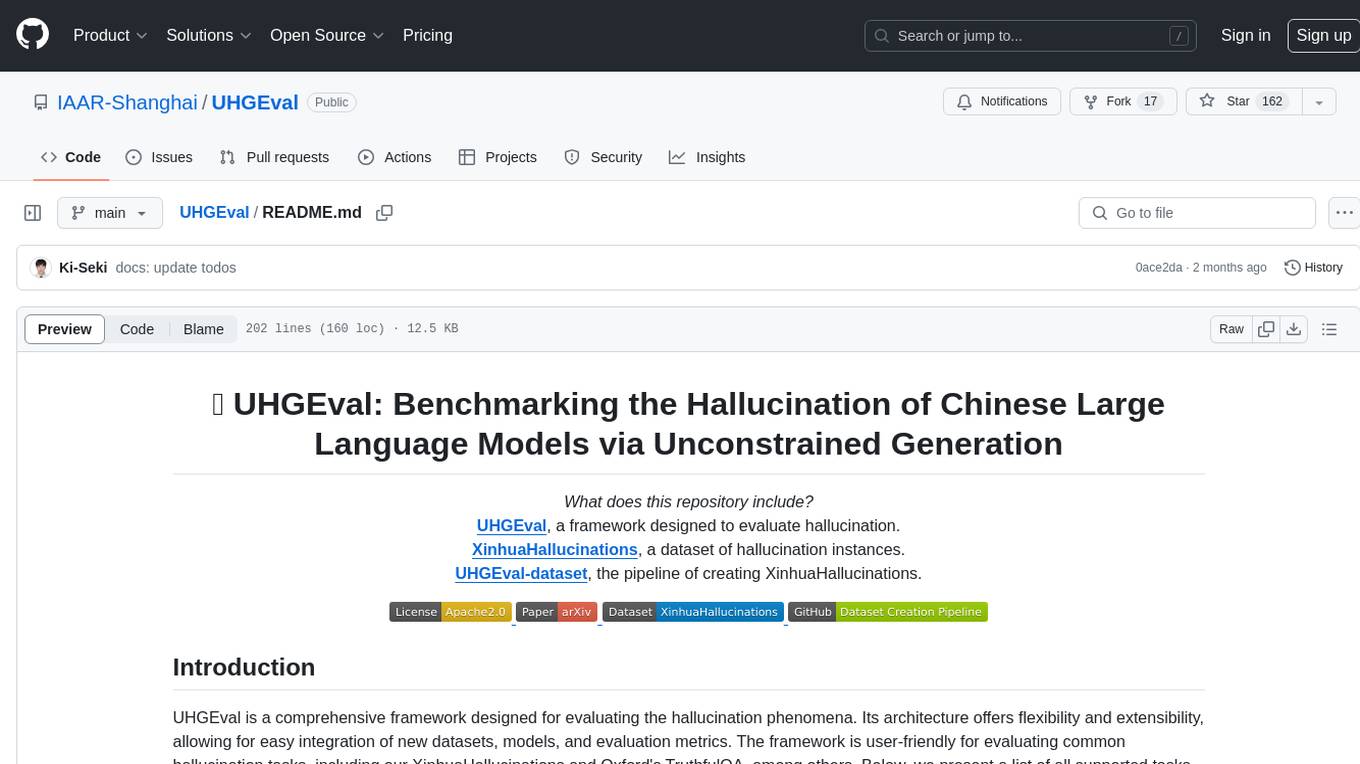
UHGEval
UHGEval is a comprehensive framework designed for evaluating the hallucination phenomena. It includes UHGEval, a framework for evaluating hallucination, XinhuaHallucinations dataset, and UHGEval-dataset pipeline for creating XinhuaHallucinations. The framework offers flexibility and extensibility for evaluating common hallucination tasks, supporting various models and datasets. Researchers can use the open-source pipeline to create customized datasets. Supported tasks include QA, dialogue, summarization, and multi-choice tasks.
For similar tasks

vlmrun-hub
VLMRun Hub is a versatile tool for managing and running virtual machines in a centralized manner. It provides a user-friendly interface to easily create, start, stop, and monitor virtual machines across multiple hosts. With VLMRun Hub, users can efficiently manage their virtualized environments and streamline their workflow. The tool offers flexibility and scalability, making it suitable for both small-scale personal projects and large-scale enterprise deployments.
For similar jobs
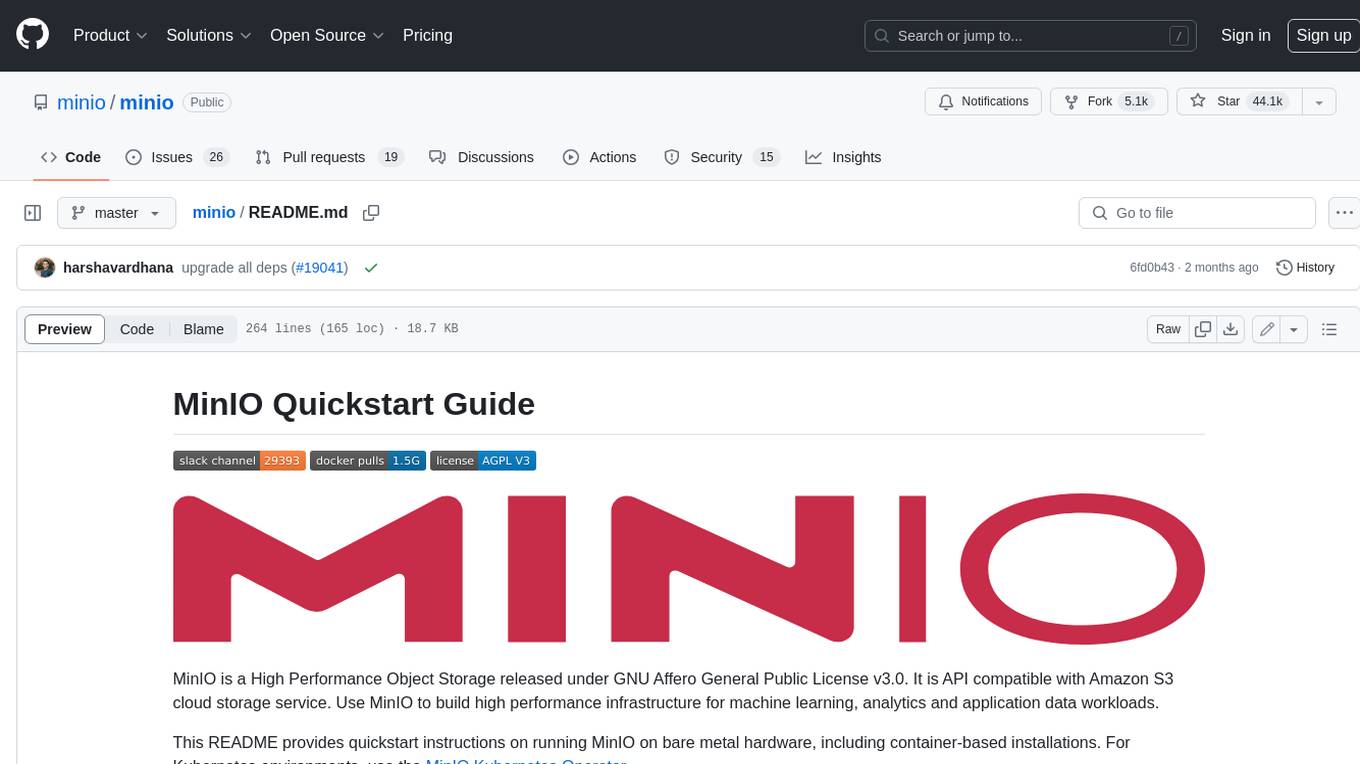
minio
MinIO is a High Performance Object Storage released under GNU Affero General Public License v3.0. It is API compatible with Amazon S3 cloud storage service. Use MinIO to build high performance infrastructure for machine learning, analytics and application data workloads.
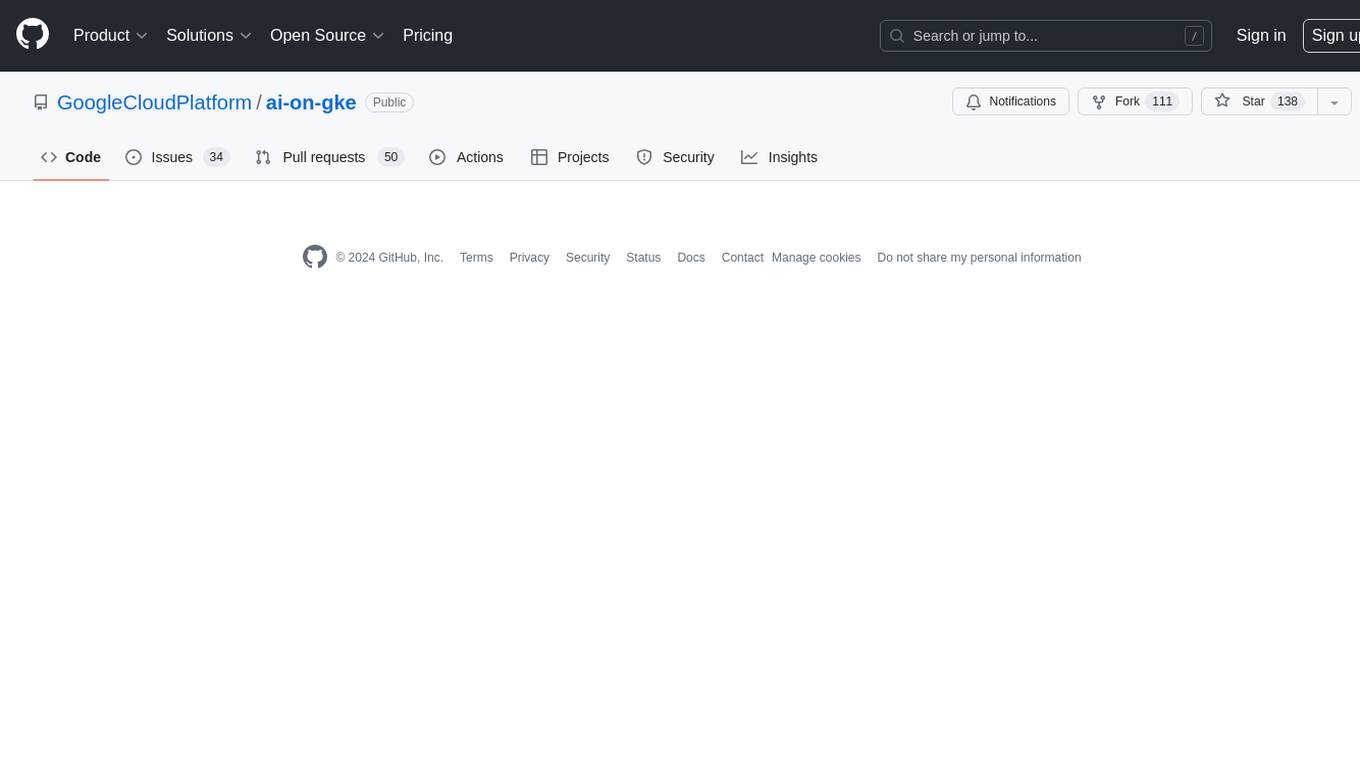
ai-on-gke
This repository contains assets related to AI/ML workloads on Google Kubernetes Engine (GKE). Run optimized AI/ML workloads with Google Kubernetes Engine (GKE) platform orchestration capabilities. A robust AI/ML platform considers the following layers: Infrastructure orchestration that support GPUs and TPUs for training and serving workloads at scale Flexible integration with distributed computing and data processing frameworks Support for multiple teams on the same infrastructure to maximize utilization of resources
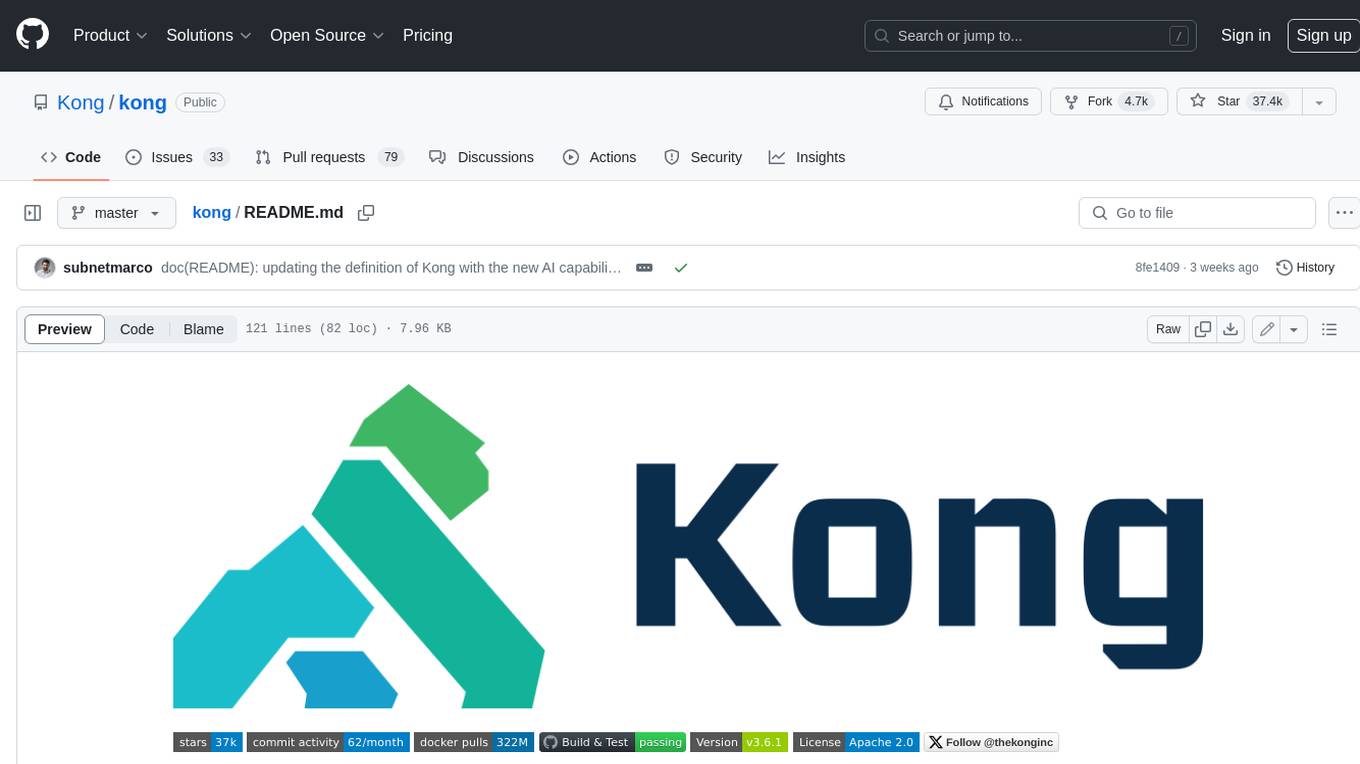
kong
Kong, or Kong API Gateway, is a cloud-native, platform-agnostic, scalable API Gateway distinguished for its high performance and extensibility via plugins. It also provides advanced AI capabilities with multi-LLM support. By providing functionality for proxying, routing, load balancing, health checking, authentication (and more), Kong serves as the central layer for orchestrating microservices or conventional API traffic with ease. Kong runs natively on Kubernetes thanks to its official Kubernetes Ingress Controller.
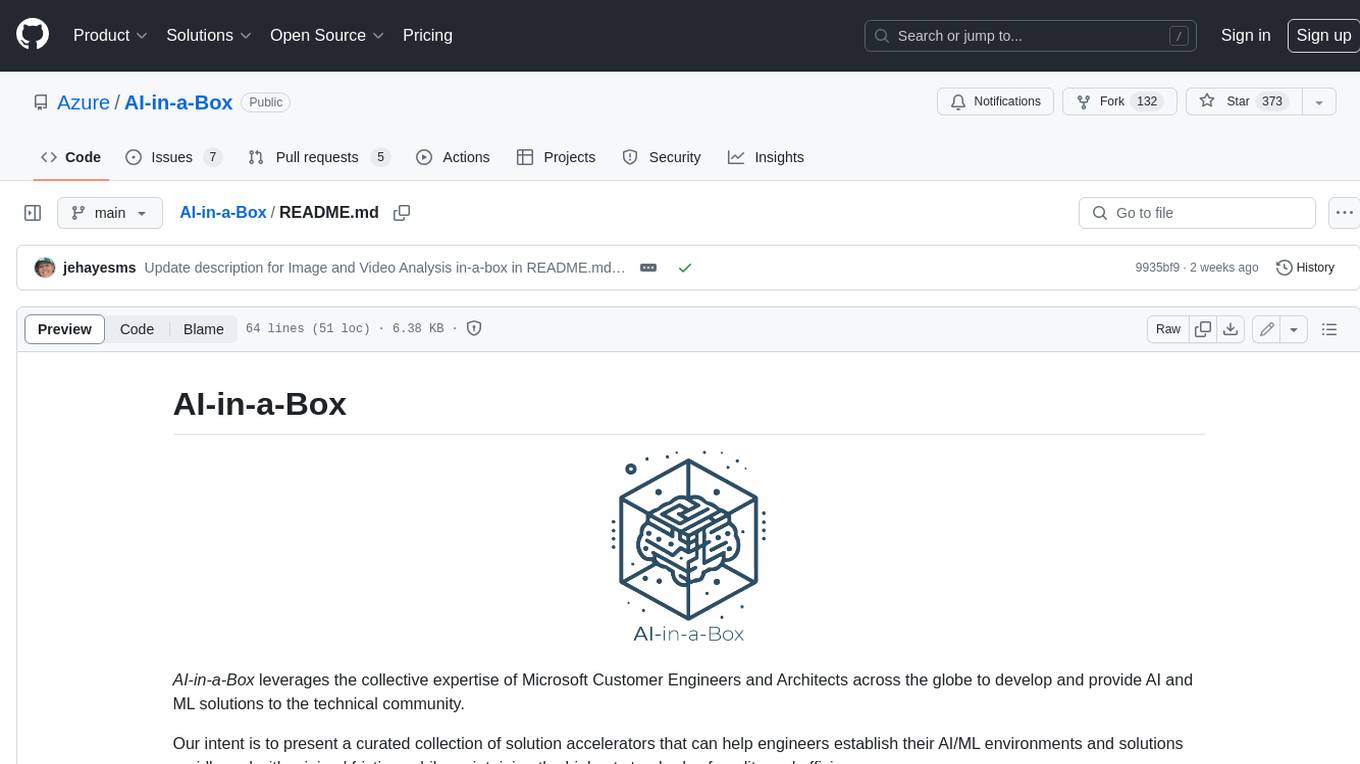
AI-in-a-Box
AI-in-a-Box is a curated collection of solution accelerators that can help engineers establish their AI/ML environments and solutions rapidly and with minimal friction, while maintaining the highest standards of quality and efficiency. It provides essential guidance on the responsible use of AI and LLM technologies, specific security guidance for Generative AI (GenAI) applications, and best practices for scaling OpenAI applications within Azure. The available accelerators include: Azure ML Operationalization in-a-box, Edge AI in-a-box, Doc Intelligence in-a-box, Image and Video Analysis in-a-box, Cognitive Services Landing Zone in-a-box, Semantic Kernel Bot in-a-box, NLP to SQL in-a-box, Assistants API in-a-box, and Assistants API Bot in-a-box.
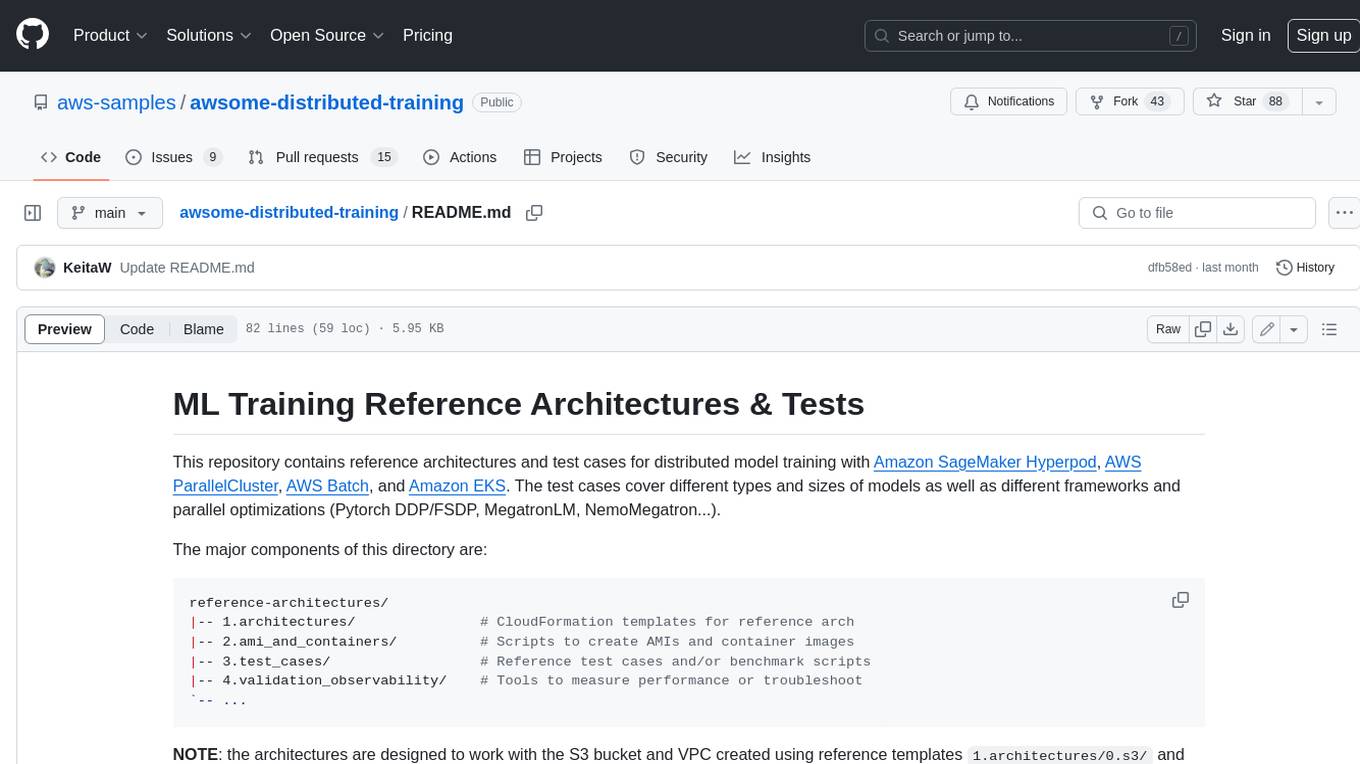
awsome-distributed-training
This repository contains reference architectures and test cases for distributed model training with Amazon SageMaker Hyperpod, AWS ParallelCluster, AWS Batch, and Amazon EKS. The test cases cover different types and sizes of models as well as different frameworks and parallel optimizations (Pytorch DDP/FSDP, MegatronLM, NemoMegatron...).
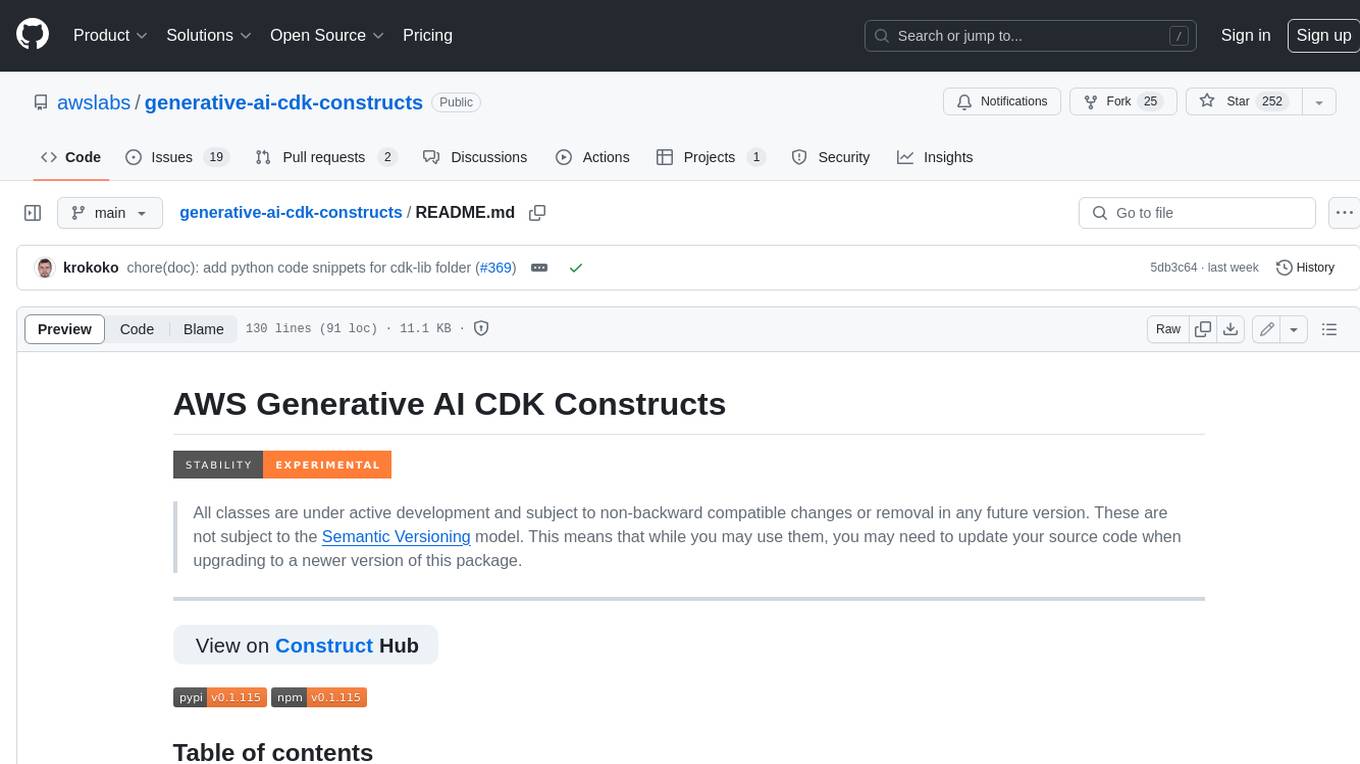
generative-ai-cdk-constructs
The AWS Generative AI Constructs Library is an open-source extension of the AWS Cloud Development Kit (AWS CDK) that provides multi-service, well-architected patterns for quickly defining solutions in code to create predictable and repeatable infrastructure, called constructs. The goal of AWS Generative AI CDK Constructs is to help developers build generative AI solutions using pattern-based definitions for their architecture. The patterns defined in AWS Generative AI CDK Constructs are high level, multi-service abstractions of AWS CDK constructs that have default configurations based on well-architected best practices. The library is organized into logical modules using object-oriented techniques to create each architectural pattern model.
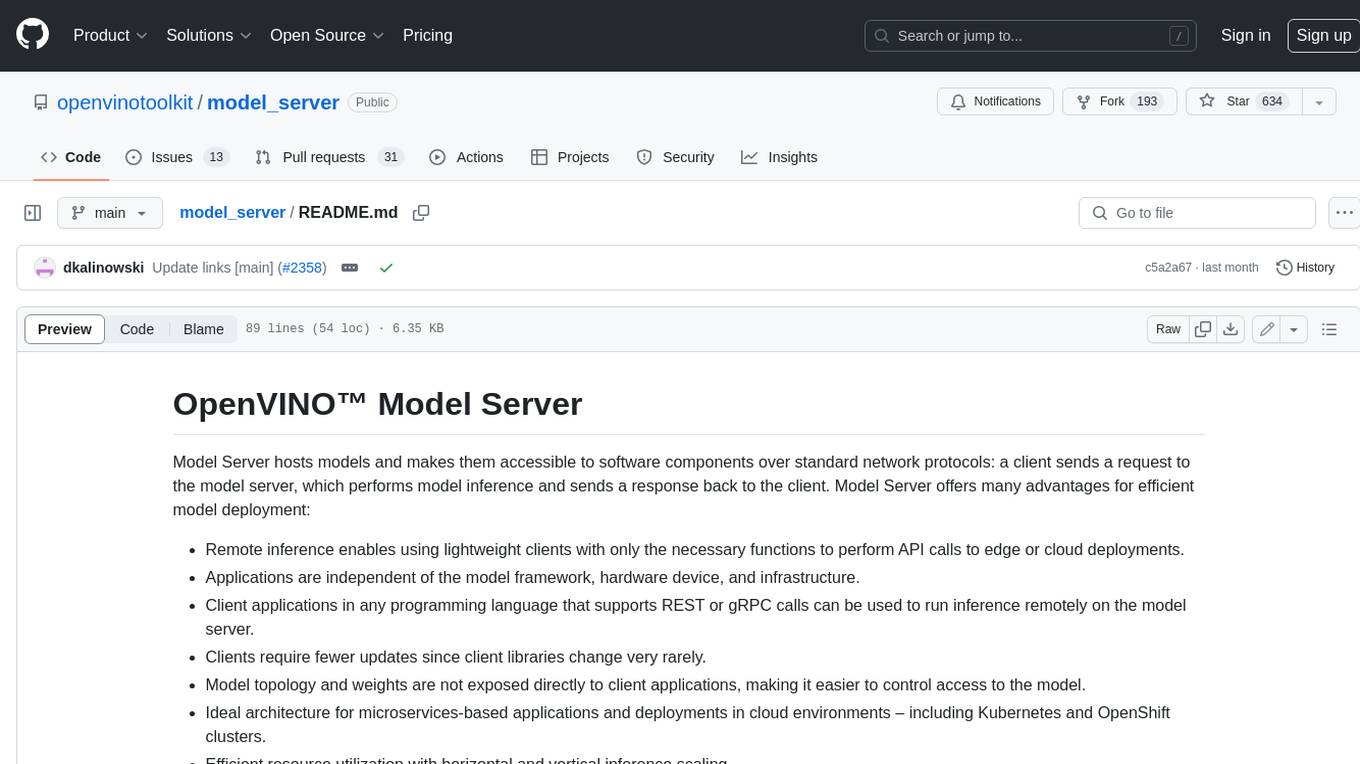
model_server
OpenVINO™ Model Server (OVMS) is a high-performance system for serving models. Implemented in C++ for scalability and optimized for deployment on Intel architectures, the model server uses the same architecture and API as TensorFlow Serving and KServe while applying OpenVINO for inference execution. Inference service is provided via gRPC or REST API, making deploying new algorithms and AI experiments easy.
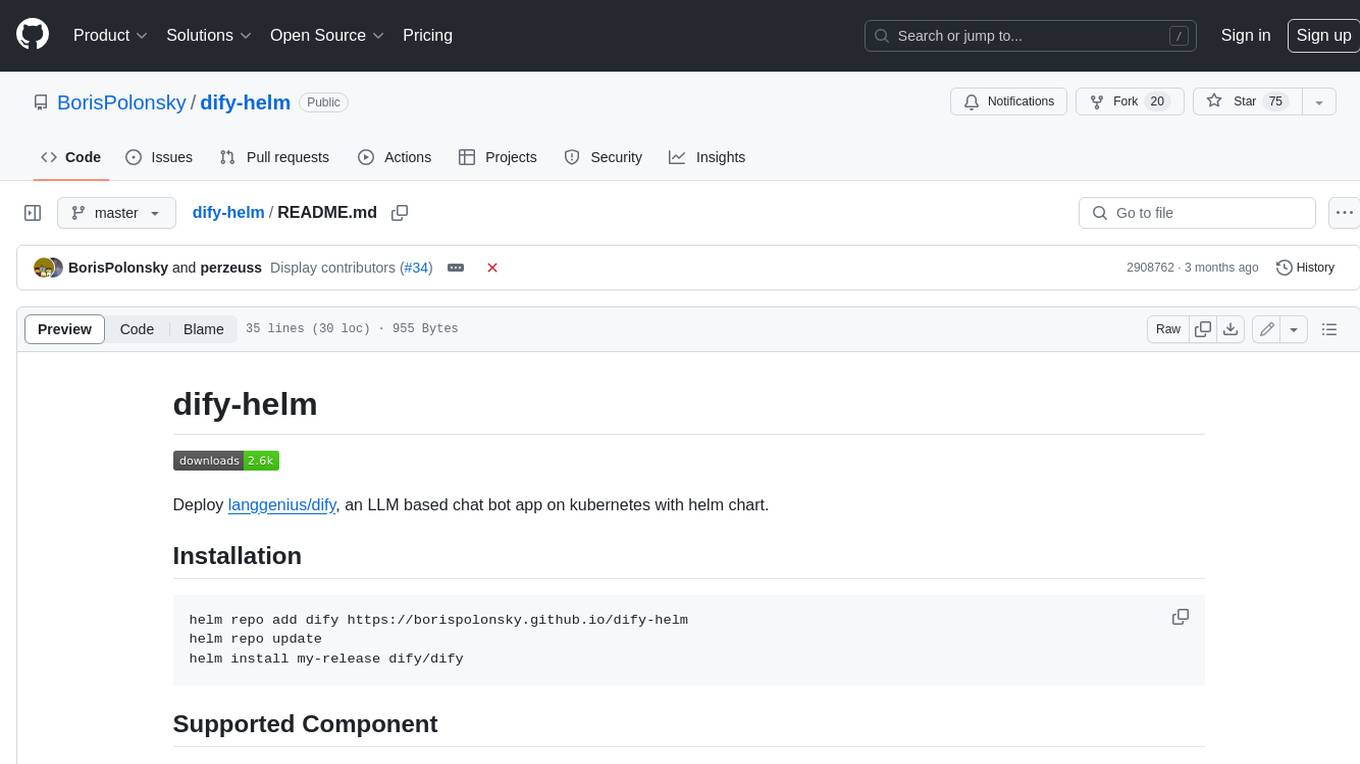
dify-helm
Deploy langgenius/dify, an LLM based chat bot app on kubernetes with helm chart.





